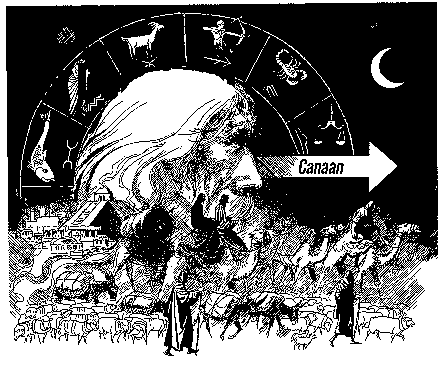| Volume Sixteen — Article 2 | Volume 16 | Home |
|
Sanctification — Its Definition If you take a concordance and start noting how sanctify, sanctification, holiness and related words are used, the first thing which may strike you is the various ways in which these words are used. To start with, sanctify is used in reference to a variety of objects. It may be applied to places (the camp of Israel, the hill of Zion), to time (the Sabbath, the fiftieth year), or to people (the firstborn, the priests, the congregation or individual people). It is also quite evident that the word sanctification has different shades of meaning. For instance, sanctification may mean any of the following: 1. A completed act, as when God sanctified Jeremiah before he was born or the seventh day at creation (Jer. 1:5; Gen. 2:2,3). 2. A process, as when the Hebrews were exhorted to follow holiness or the Corinthians to perfect holiness (Heb. 12:14;2Cor. 7:1). 3. A status that is possessed or enjoyed (1 Cor. 1:2). 4. An experience and way of life to practice (1 Thess. 4:3-7) Louis Berkhoff, the late Reformed scholar, notices four distinct uses of the words sanctification and sanctify in the New Testament: 1. It may mean to regard as holy (1 Pet. 3:15; Matt. 6:9). 2. It may mean to ritually separate for holy use, such as in Matthew 23:17, 19. 3. It may mean expiation from defilement, as used in the book of Hebrews. 4. It may be used in accordance with the most commonly accepted theological use, i.e., ". . . that operation of God by which He especially, through the Spirit, works in man the subjective quality of holiness." — Louis Berkhoff, Systematic Theology (London: Banner of Truth, 1971), p.527. Other scholars may contend for some other uses or shades of meaning. The reason why we point this out by way of introduction is to avoid falling into needless theological combat over one particular meaning and ending up like the blind men arguing whether an elephant felt like a spear, a rope or a wall — depending upon which part of the elephant's anatomy each one chanced to touch.
Disputed loud and long, Each in his own opinion Exceeding stiff and strong, Though each was partly in the right, And all were in the wrong! This action of separation or setting apart has two aspects:  1. It means separation from. Abraham was separated from Chaldea and from his father's home. Israel was separated from Egypt. The Christian church is called to separate from the world. ("Wherefore come out from among them, and be ye separate, saith the Lord..." 2 Cor. 6:17.) And finally, the faithful worshipers are called to separate from apostate religion. ("... Come out of her, My people. . ." Rev. 18:4.) 1. It means separation from. Abraham was separated from Chaldea and from his father's home. Israel was separated from Egypt. The Christian church is called to separate from the world. ("Wherefore come out from among them, and be ye separate, saith the Lord..." 2 Cor. 6:17.) And finally, the faithful worshipers are called to separate from apostate religion. ("... Come out of her, My people. . ." Rev. 18:4.)2. Sanctification not only means separation from sin, but a separation to a new life. Abraham was separated from Chaldea to become the friend of God. Israel was separated from Egypt and consecrated to the service of Yahweh. Believers are purged from dead works to serve the living God (Heb. 9:14). Those who are justified by faith are "delivered from the law" to "serve in newness of Spirit." Rom. 7:6. So on the one hand sanctification means separation from sin, from unholy fellowship, from the abomination of the heathen, from the world and its allurements, from the ways of the ungodly. And on the other hand it means separation to a life of obedience to God, to fellowship with Him, to devotion to His glory and service. Thus, as Trench observes, the word sanctification (and related words) "speedily acquires a moral significance." — Ibid., p.332. In theology sanctification has generally come to mean that process of becoming or being made holy. It is true that the New Testament does not use the actual word sanctification very frequently to describe this process, but the concept is nevertheless very prominent. Besides calling it sanctification, the New Testament uses other expressions which describe this important process. Here are some of them:
2. Walking in newness of life (Rom. 6:4). 3. Being transformed (Rom. 12:2). 4. Perfecting holiness in the fear of God (2 Cor. 7:1). 5. Growing up into Christ (Eph. 4:15). 6. Pressing toward the mark (Phil. 3:14). 7. Being built up in the faith (Col. 2:7). 8. Partaking of the divine nature (2 Pet. 1:4). 9. Growing in grace (2 Pet. 3:18). L. Berkhoff
|